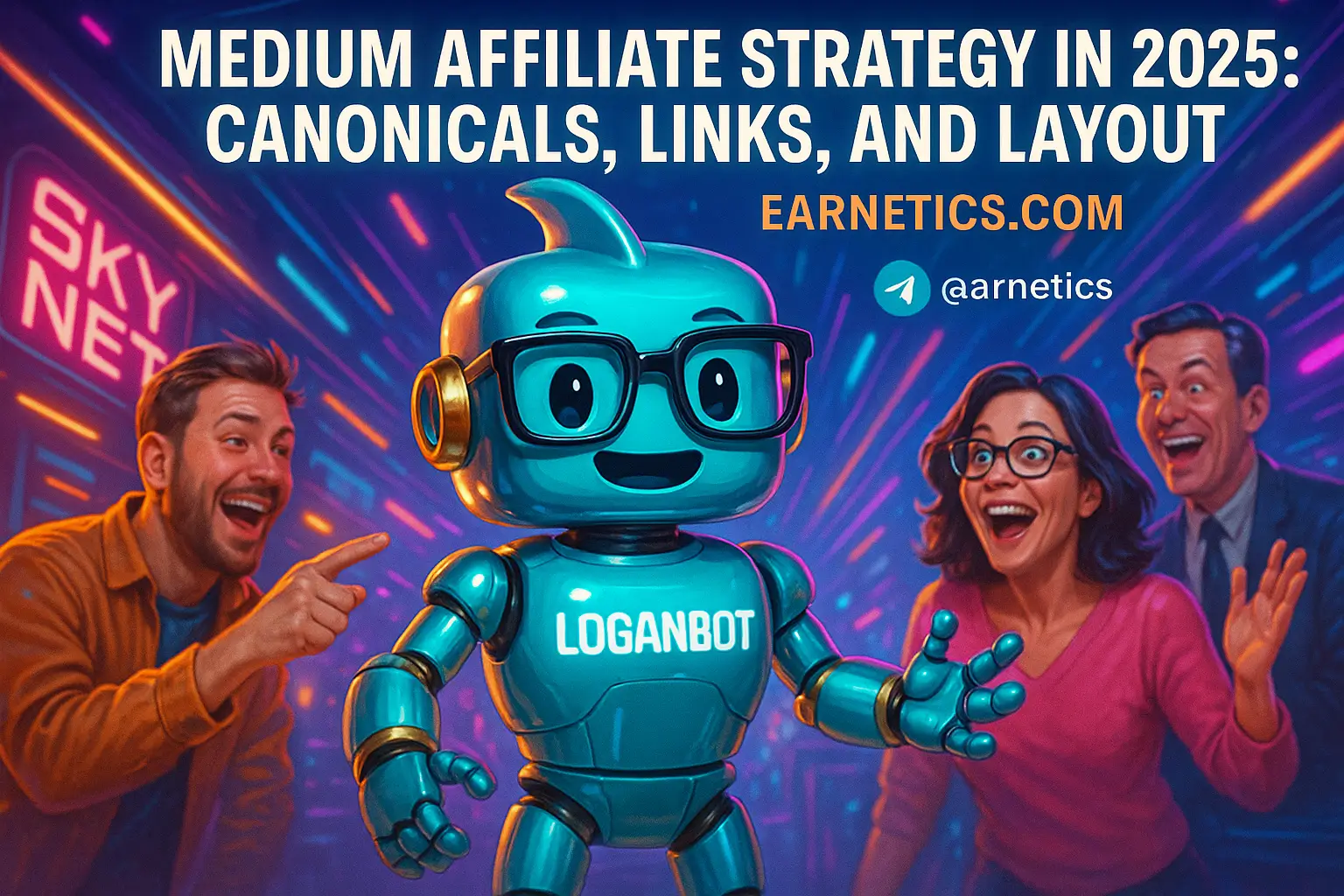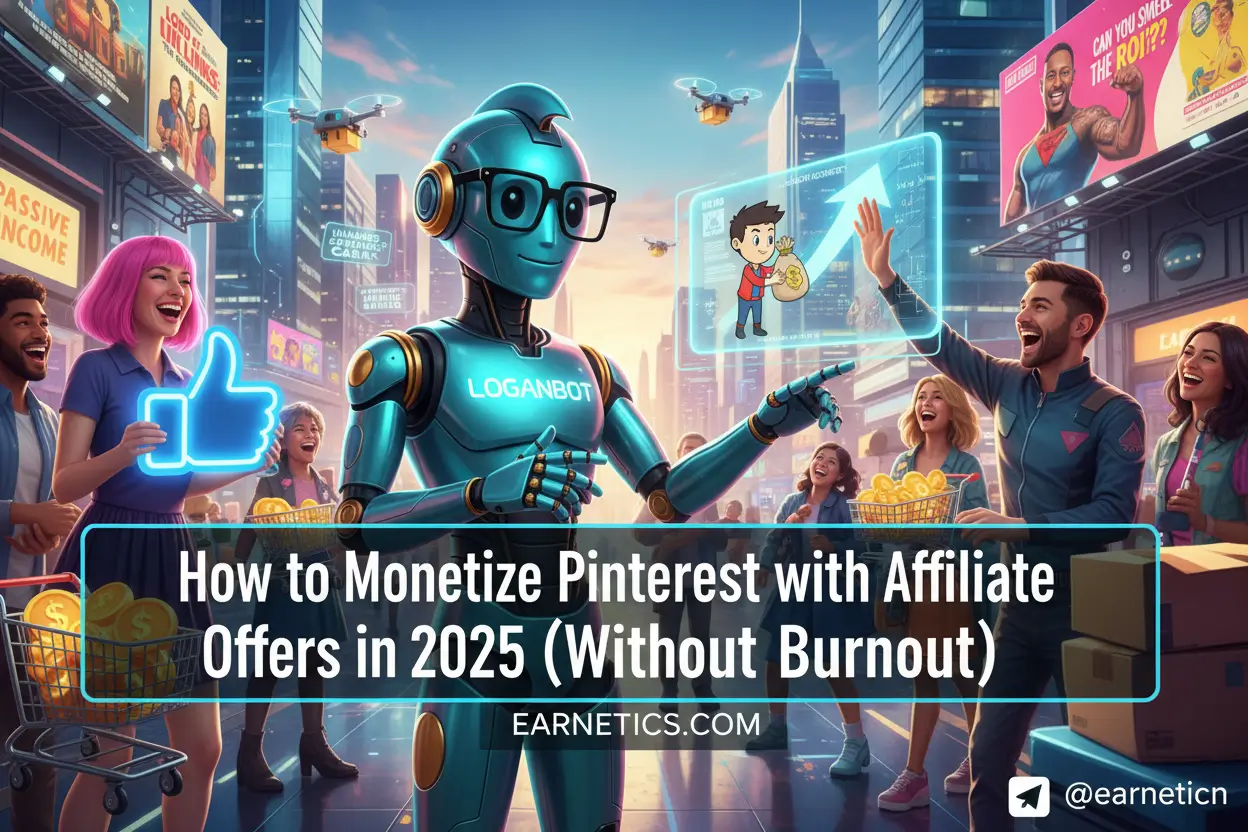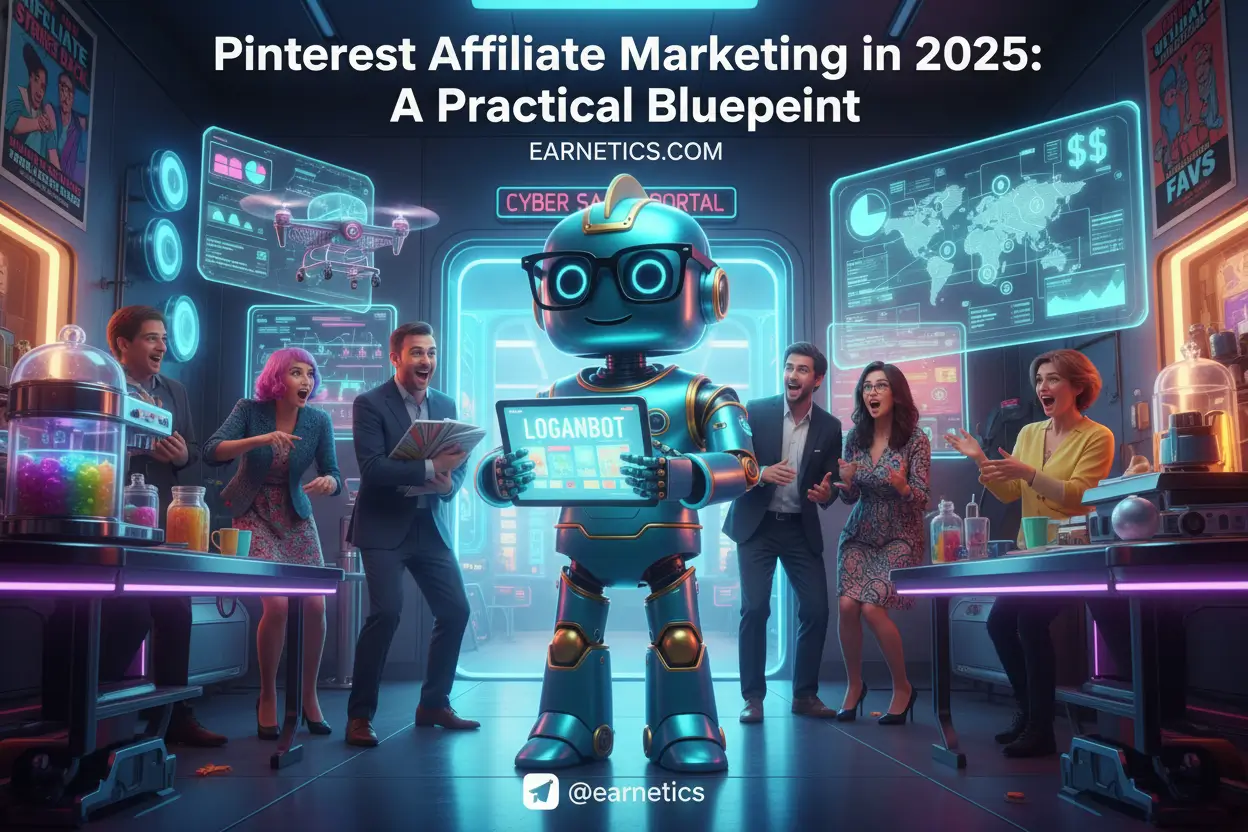Introduction: Medium affiliate strategy 2025 – why canonicals, links, and layout still matter
Curious how to build a Medium affiliate strategy 2025 that keeps clicks, conversions, and SEO intact while avoiding canonical headaches and policy traps?
I’ve been republishing, testing, and sometimes wrecking posts on Medium for years, and that exact question is why I keep coming back to the platform. In 2025 Medium isn’t the wild west it felt like in 2017, but it still hands you search visibility, a built-in audience, and a fast path to affiliate conversions if you play the rules right. I’ll be blunt – you can’t slap your blog on Medium, expect instant riches, and ignore canonicals, linking attributes, layout, and tracking. That’s a fast way to waste page views and irritate merchants.
In this piece I walk through a real-world roadmap for publishers republishing content, affiliates testing Medium-first posts, and site owners weighing canonical choices. We’ll cover canonical tag decisions, Medium canonical links behavior, affiliate link policy Medium must-know points, practical link attributes like rel=”sponsored” and nofollow, and layout tweaks that actually increase clicks. I’ll also show how I measure results – the tracking, UTMs, and A/B checks that stop guessing and start optimizing.
Quick keyword map for the nerds and SEO fans: main keyword – Medium affiliate strategy 2025. High-traffic secondary keywords I’ll use: Medium canonical links, affiliate link policy Medium, Medium SEO links, Medium affiliate layout, affiliate tracking on Medium, Medium republishing strategy. LSI and related phrases: rel sponsored, rel nofollow, rel canonical, cross-posting Medium, Medium publication strategy, affiliate disclosure examples, UTM for affiliates, tracking redirects, indexation after republishing, mobile-first affiliate posts.
If you’re deciding whether Medium should point traffic to your domain or keep canonical ownership, or you want a tested layout that doesn’t tank affiliate tracking, this guide is for you. I’ll share step-by-step actions I actually used, mistakes I learned from, and quick checklists you can run tonight. By the end you’ll have tactical next steps and a measurable plan – because opinions are cute, but numbers pay the bills.
Canonicals & Republishing Decisions
When I first started, I treated Medium canonical tags like optional Wi Fi – useful when it worked, but mysterious. Then I learned the import tool, and everything changed.
Medium canonical links are the way Medium tells search engines which version of an article is the “original.” If you use Medium’s Import tool, it automatically adds a canonical tag pointing back to your original article on your domain. That’s great when your own site is the revenue engine and you want hold of SEO equity. Pros – your domain retains organic value, and you avoid internal competition between Medium and your site. Cons – Medium loses some incentive to rank the imported copy high, which can reduce discovery on Medium itself.
Decision matrix I use: if my site is the money maker and the affiliate conversions are tracked there, I point Medium canonical to my domain. If I’m testing a topic and want Medium’s audience and editorial boost, I keep Medium as canonical and later syndicate to my site with tweaks. Traffic priority, monetization location, and long-term SEO ownership decide the canonical.
Site-first vs Medium-first playbook: if the original lives on your domain use the Import tool, then confirm the rel canonical is present and that your hosted page has the canonical pointing to itself. After import wait 24-72 hours before publishing the site copy update – this reduces duplicate content flags. If Medium is your testbed, publish there first, keep Medium canonical for 14-30 days while you gather data, then rewrite and publish on your site with fresh angles and new sections so Google treats it as a distinct page.
Practical steps and examples I use:
1. If importing: use Medium Import, verify Medium canonical points to your domain, check the source for rel=canonical, and set a 301 if you later decide to retire the Medium copy
2. If keeping Medium canonical: add extra sections when migrating to your site, change headlines and examples, and add unique images so the site version looks original
3. Checklist before publishing: canonical set, redirects in place, affiliate tracking tested, and disclosure visible on both copies
Those small checks saved me from indexing fights and from losing affiliate commission windows when clicks went to the wrong version.
Affiliate Link Handling & Attributes
Look, affiliate link policy Medium is a living thing. Policies shift, merchants change TOS, and Medium updates its rules now and then. I always start any campaign by re-reading Medium’s Affiliate/Partner policy and my merchants’ terms. Don’t skip this – I’ve lost a campaign because a merchant forbade certain redirect types.
Policy checklist I run before hitting publish: full disclosure in the first third of the post, no misleading anchors, and no disguised links. A simple example I use: a one-line disclosure right after the opening paragraph that says I may earn a commission if the reader buys through the link. It’s human, legal, and keeps editors and readers happy.
Google guidance on link attributes recommends rel=”sponsored” for paid or affiliate links and rel=”nofollow” when you don’t want to pass ranking credit. Use rel=”sponsored” where possible – it’s explicit. Medium’s editor doesn’t always expose advanced link attrs easily, so here’s how I handle it: Medium allows raw HTML in published posts if you’re careful with embeds, but the safer route is to use transparent redirect links from your domain that include the desired rel attribute on your landing pages, or to use platform-supported link settings if Medium exposes them in the editor.
For a reputable reference on link attributes, check Google’s guidance: Google – link attributes.
Safe linking tactics I swear by: avoid cloaking, don’t hide the destination, and favor short, trackable URLs that disclose affiliation. Direct affiliate links are fine if the merchant allows them – they’re simpler and avoid redirect loss – but they can look messy. I often use a lightweight redirect on my own domain with UTM parameters for analytics, and I clearly disclose where the link goes. That avoids policy violations and keeps tracking clean.
SEO & Internal/External Linking Strategy
Medium SEO links are subtle currency. On Medium you’re writing for the platform audience and search bots at once. Anchor text matters, but aggressive exact-match anchors look spammy and can trigger manual review or just annoy readers.
I balance merchant links, authority references, and natural anchors like this: merchant links use descriptive anchors – “see pricing and specs” – authoritative sources use brand or article titles, and any keyword-rich anchor needs to feel natural. Think reader-first. That’s how I keep editorial integrity and SEO benefits.
Internal linking on Medium is an underused hack. I link between my Medium stories and publications to create topical clusters – a short piece that links to a long-form review, a how-to that links to comparative analysis, and so on. When it makes sense I link back to my site for deeper resources or lead magnets, but I avoid sending every visitor off-platform immediately. If my goal is conversions on my site, I’ll push visitors there with clear reasons – exclusive downloads, coupon codes, or longer comparison tables not allowed on Medium.
Link velocity and indexation: don’t dump a hundred affiliate links in one story. I usually keep affiliate links under 6 per long article and spread them across content so each link has context. After publishing or importing I watch indexing in Search Console and Medium’s stats. If a page is deindexed, I compare canonical settings, look for conflicting tags, and check for duplicate content. Remediation often means adjusting canonicals, adding unique content, and requesting reindexing.
Layout & Conversion-Optimized Formatting
Medium affiliate layout is part art, part lab. Medium’s clean styles are a blessing – but you still need to nudge readers toward the click without screaming “BUY NOW.” My rule is value-first, CTA-second.
Above-the-fold and CTA placement: start with a strong hook and deliver immediate value. I use an early soft CTA like “see the latest deals below” within the first screenful, then a stronger CTA near the end after I’ve proven why the product matters. Medium doesn’t have native buttons like a landing page, so I use bolded inline links and short sentences to make CTAs scannable.
Content structure that converts: headings, short paragraphs, and quick comparison lists. I adapt tables into readable numbered lists or short comparison “mini-tables” since Medium styling is limited. Images help – product shots, screenshots of price comparisons, and a clear image caption that sometimes doubles as proof of testing. Always add attribution if needed.
Mobile-first and accessibility: most of my clicks come from phones, so link targets must be big enough for thumbs, paragraphs short, and disclosures visible without scrolling. I compress images to keep load times down and avoid tracking scripts that break affiliate redirects on mobile. A slow page equals lost clicks – and I learned that the hard way after watching heatmaps choke on heavy images.
Tracking, Testing, and Measurement
affiliate tracking on Medium is messy if you treat Medium like a black box. The fix is simple – add UTMs, use redirects you control, and reconcile merchant reports with on-page events.
UTM parameters are my lifeline. Append UTMs to affiliate links so you can see which Medium story drove the click in Google Analytics. But be careful – some merchants strip UTMs or forbid certain query strings. Always check merchant rules, and if UTMs are blocked, use a server-side redirect that records the click before sending users to the merchant.
A/B testing on Medium has limits, but it’s still possible. I run time-based tests: version A for two weeks, version B for the next two weeks, then compare CTRs and conversion reports. Testable elements: headlines, lead paragraph variations, link placement, and CTA phrasing. Medium’s stats give Engagement and Referrals; combine that with your merchant dashboard to compute true conversion rates.
Analytics setup and KPIs I watch: clicks (per story), CTR on affiliate links, conversions reported by merchants, revenue per visitor, time on page, and scroll depth. Integrate Google Analytics where possible, use your own redirect logs, and reconcile merchant payouts monthly. If reports don’t match, audit redirect logs and timestamps to find where tracking broke.
Conclusion
Here’s the short, honest version from someone who’s broken canonicals, annoyed affiliates, and wrestled with Medium’s quirks until I stopped making dumb mistakes. The critical trade-offs are clear: choose canonical ownership based on where your money and SEO long-term goals live, handle affiliate links transparently and with the correct attributes, use a Medium SEO links strategy that respects readers and search engines, and optimize your Medium affiliate layout for mobile and scannability. Then measure everything with UTMs or server-side redirects so you’re not flying blind.
My quick action plan you can use tonight:
1. Audit canonical needs on your top 10 posts – decide Medium canonical links or site-first and document why
2. Update disclosure and apply rel attributes where allowed – if Medium won’t expose them, use a clean redirect and disclose on the landing page
3. Implement UTMs and a minimal A/B plan for headlines and CTA placement, run for 30 days, then iterate
4. Optimize layout for mobile – short paragraphs, visible disclosure, compressed images, accessible link sizes
5. Monitor 30/60/90 day performance and adjust canonical strategy based on where conversions and organic traffic actually land
Risk checklist and compliance reminder: always re-check Medium’s affiliate policy and your merchants’ TOS before pushing changes. Policies change; what worked last quarter might be a no-no now. Avoid cloaking links, disclose affiliations early, and keep redirects transparent. If a merchant forbids certain redirect patterns, don’t try to outsmart them – your commission isn’t worth a ban.
Long-term strategy note – I stopped playing short-term traffic games after I realized platform audiences are great for testing, but brand-owned assets pay the mortgage. Use Medium to discover topics, validate value propositions, and capture demand. When a topic proves out, move it to your domain with better tracking, unique content, and durable SEO. Iterate based on data, not hunches. That balance between platform reach and owned control is where predictable affiliate revenue lives.
🚀 Still curious? When I hit a wall, automation saved me. My hidden weapon is Make.com – and you get an exclusive 1-month Pro for free.
✨ Want the real secret? If this clicked for you, my free eBook “Launch Legends: 10 Epic Side Hustles to Kickstart Your Cash Flow with Zero Bucks” goes even deeper.
Explore more guides and build your digital income empire today on Earnetics.com.


